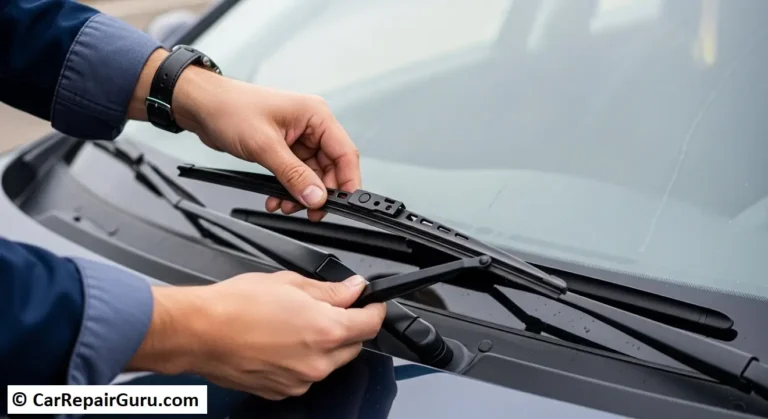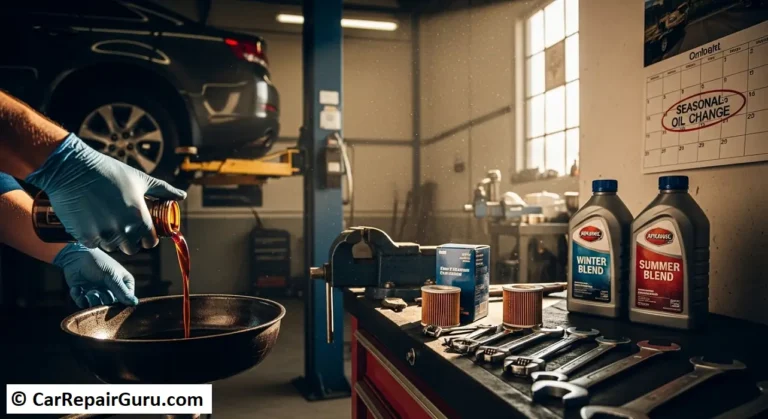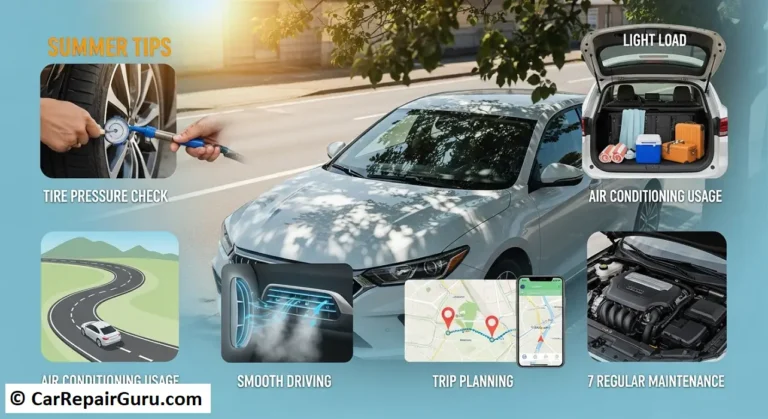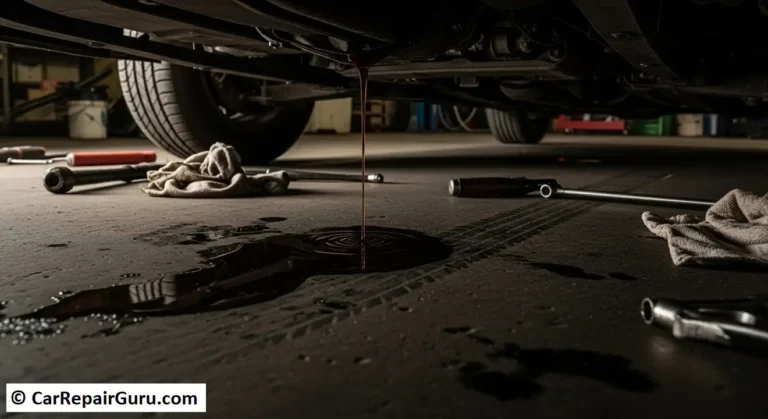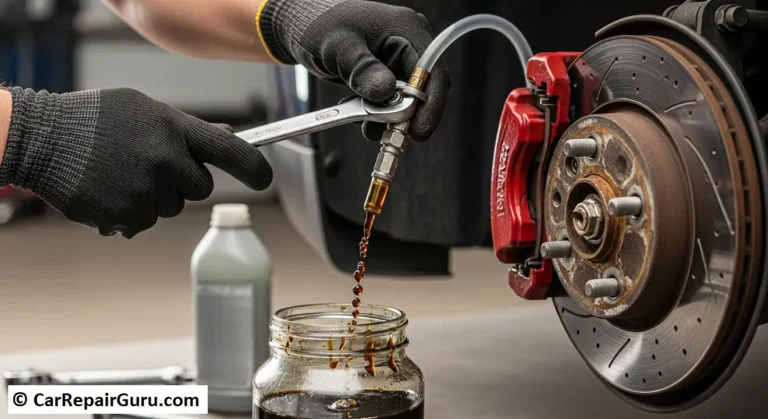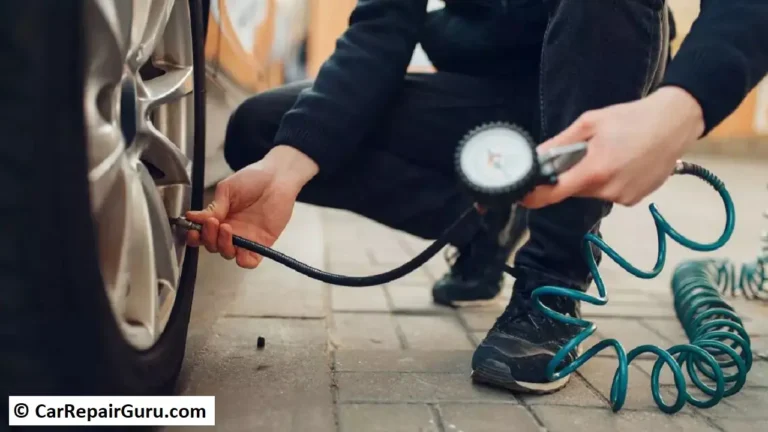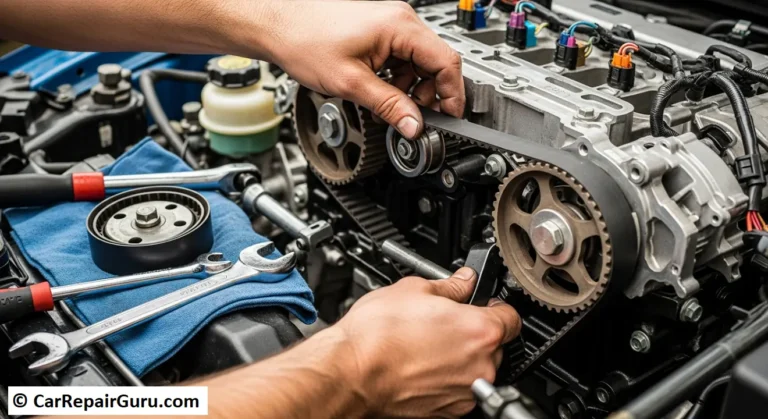
Summer is a time for road trips, family vacations, and long drives. But did you know that hot weather can take a serious toll on your car? As temperatures soar, your vehicle faces challenges that can lead to breakdowns, reduced efficiency, or costly repairs if not addressed in time.
This guide is designed to help you prepare your car for summer, ensuring it stays cool, runs smoothly, and keeps you safe on the road. From maintaining your cooling system to checking tires and protecting your car’s interior, we’ll cover practical tips that every driver can follow. Whether you’re planning a cross-country adventure or just want to avoid car trouble in the heat, these summer car care tips are a must-know.
Check and Maintain Your Cooling System
Your car’s cooling system is its first line of defense against the sweltering summer heat. A well-functioning cooling system prevents your engine from overheating, which can lead to severe damage and expensive repairs. Here’s how to ensure it’s in top shape:
Why the Cooling System Matters
The cooling system regulates your engine’s temperature by circulating coolant through the radiator and engine block. Without it, the intense heat generated by the engine, especially during summer, could cause components to warp, crack, or seize. Regular maintenance of this system not only keeps your car running efficiently but also extends the engine’s lifespan.
Steps to Inspect Coolant Levels and Radiator Condition
- Check the Coolant Level: Open the hood when the engine is cool and locate the coolant reservoir. Ensure the fluid is between the minimum and maximum markers. Top it up with the correct coolant type if needed.
- Inspect the Radiator: Look for visible leaks, rust, or damage on the radiator fins. Clean off debris and ensure the radiator cap is secure.
- Flush the System: If the coolant appears dirty or cloudy, it might be time for a flush and refill. This ensures optimal performance and prevents blockages.
- Inspect Hoses and Connections: Check for cracks, bulges, or leaks in the hoses connecting the radiator and engine. Replace any damaged components immediately.
Signs of Cooling System Problems
- The temperature gauge frequently moves into the red zone.
- Visible steam from under the hood.
- Coolant leaks under the car (look for a green, orange, or pink puddle).
- A sweet smell around the engine, which often indicates a coolant leak.
Proactively caring for your cooling system is one of the best ways to avoid being stranded with an overheated engine. Regular checks can save you from costly repairs and ensure a smooth summer drive.
Ensure Proper Tire Care
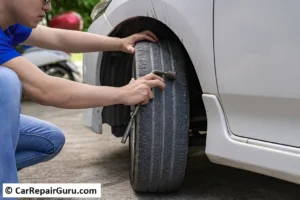
Tires are your car’s only contact with the road, making their care critical—especially during summer. Rising temperatures can significantly affect tire pressure, tread wear, and overall performance, so taking a few proactive steps can save you from dangerous blowouts or unnecessary wear.
Effects of High Temperatures on Tire Pressure and Tread Wear
As the temperature rises, the air inside your tires expands, increasing tire pressure. Overinflated tires can cause reduced traction and uneven tread wear, while underinflated tires generate excess heat, increasing the risk of a blowout. Summer heat also accelerates tread wear, which can compromise your tires’ grip on hot pavement.
How to Check and Adjust Tire Pressure Correctly
- Use a Reliable Gauge: Invest in a good-quality tire pressure gauge to check your tires at least once a month.
- Check When Tires Are Cold: Measure the pressure in the morning or after the car has been parked for several hours. Heat from driving can give inaccurate readings.
- Follow Manufacturer Guidelines: Find the recommended tire pressure for your car in the owner’s manual or on the driver’s side door frame. Inflate or deflate the tires to match this specification.
- Don’t Forget the Spare: A flat spare tire won’t help in an emergency, so check its pressure too.
Importance of Tire Rotation and Alignment During Summer
Summer driving often involves long road trips or heavy loads, which can cause uneven wear. Rotating your tires every 5,000-7,000 miles ensures even wear and prolongs their lifespan. Additionally, check your alignment if you notice your car pulling to one side or uneven tread wear—misalignment can cause tires to wear out prematurely.
Proper tire care not only enhances safety but also boosts fuel efficiency and extends the life of your tires. Make it a priority this summer!
Test and Maintain the Air Conditioning System
Your car’s air conditioning (AC) system is more than a luxury during summer—it’s essential for driver comfort and safety. A well-maintained AC system ensures you stay cool and focused, preventing discomfort and reducing fatigue on long drives. Here’s how to ensure it’s functioning optimally:
Role of the AC System in Driver Comfort and Safety
The AC system keeps the cabin temperature comfortable, which is crucial in hot weather. High cabin temperatures can cause dehydration, drowsiness, and loss of concentration, making it unsafe to drive. Additionally, a functioning AC helps defog windows, ensuring clear visibility in humid conditions.
How to Test AC Performance and Identify Issues
- Turn on the AC: Set it to the maximum cooling setting. Pay attention to how quickly the air becomes cold and whether it maintains a steady temperature.
- Listen for Noises: Strange sounds like rattling or hissing may indicate problems such as refrigerant leaks or loose components.
- Check Airflow: Weak airflow from the vents could signal clogged filters or issues with the blower motor.
- Monitor Odors: A musty smell suggests mold buildup in the AC system.
Tips for Maintaining and Servicing the AC System
- Replace the Cabin Air Filter: A clogged filter restricts airflow and reduces cooling efficiency. Replace it regularly, especially during summer.
- Clean the Vents: Use a soft brush or compressed air to remove dust and debris from vents.
- Schedule Regular Servicing: Have a professional inspect and recharge the refrigerant annually to maintain optimal performance.
- Run the AC Regularly: Even in cooler months, running the AC briefly prevents seals from drying out and refrigerant from leaking.
A well-functioning AC system ensures a safe and enjoyable driving experience, no matter how hot it gets outside.
Inspect and Replace Wiper Blades
Summer isn’t just about sunshine—it often brings sudden storms that can challenge your visibility on the road. Functional wiper blades are essential for navigating these downpours safely, ensuring you have a clear view no matter how heavy the rain.
Why Summer Storms Necessitate Effective Wiper Blades
Hot weather can cause wiper blades to dry out, crack, or lose their flexibility, making them less effective during unexpected rainstorms. Driving with worn blades in a summer storm can leave streaks or fail to clear water properly, increasing the risk of accidents.
Signs That Wiper Blades Need Replacement
- Streaking or Smearing: If the blades leave streaks on the windshield, it’s a sign they’ve lost their edge.
- Chattering Sounds: A skipping motion or noise when in use indicates the rubber is uneven or hardened.
- Visible Damage: Cracks, splits, or missing rubber on the blade warrant immediate replacement.
Steps to Replace Wiper Blades and Maintain Clear Visibility
- Choose the Right Blades: Refer to your car’s manual to find the correct size and type of blades.
- Remove the Old Blades: Lift the wiper arm, press the release tab, and slide the old blade off.
- Attach the New Blades: Slide the replacement into place until it clicks securely.
- Test the Wipers: Run them with water to ensure they’re properly installed.
Regularly clean your windshield and wiper blades to remove debris that can damage the rubber. Inspect your blades monthly during summer to stay prepared for sudden rain.
Monitor Fluid Levels and Quality
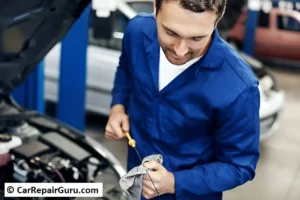
Fluids are the lifeblood of your car, ensuring that vital systems operate smoothly and efficiently. In summer, rising temperatures can affect fluid levels and performance, making regular checks essential for preventing breakdowns or costly repairs.
Importance of Checking Key Fluids
- Engine Oil: Lubricates and protects the engine’s moving parts. Low or degraded oil can lead to overheating and engine damage.
- Transmission Fluid: Keeps the transmission running smoothly by reducing friction and cooling the system. Insufficient fluid can result in gear-shifting issues or transmission failure.
- Brake Fluid: Transmits force to the brakes. Contaminated or low brake fluid compromises stopping power and safety.
- Windshield Washer Fluid: Essential for maintaining visibility, especially in dusty or stormy conditions common in summer.
How Heat Affects Fluid Levels and Performance
High temperatures can cause fluids to evaporate more quickly or degrade faster, reducing their effectiveness. Heat also makes components expand, increasing the likelihood of leaks.
Guidelines for Topping Off or Replacing Fluids
- Check Levels Regularly: Use the dipsticks or reservoir indicators to monitor levels at least once a month.
- Top Off with the Correct Type: Always use the fluid specified in your vehicle’s manual to avoid system damage.
- Replace When Needed: If fluids appear dirty, dark, or gritty, it’s time for a replacement. Follow the manufacturer’s recommended schedule for oil changes and system flushes.
Staying vigilant about your car’s fluid levels and quality during summer ensures optimal performance, protects critical components, and keeps you safe on the road.
Examine and Maintain the Battery
Summer heat can be tough on your car battery, potentially shortening its lifespan and affecting its performance. Proper maintenance during the hot months ensures your car starts reliably and all electrical systems function as they should.
Impact of High Temperatures on Battery Life and Performance
High temperatures accelerate the chemical reactions inside the battery, which can cause the electrolyte to evaporate. This leads to reduced capacity, internal corrosion, and a shorter lifespan. Heat can also damage the battery case, making it more prone to cracking and leaks.
How to Test Battery Charge and Recognize Signs of Wear
- Use a Multimeter or Battery Tester: Check the voltage. A fully charged battery should read around 12.6 volts when the car is off and 13.7–14.7 volts when the engine is running.
- Watch for Warning Signs: Slow engine starts, dim headlights, or dashboard warning lights could indicate a weak battery.
- Inspect the Battery Case: Look for swelling, cracks, or leaks, which are signs the battery needs immediate attention.
Tips for Cleaning Battery Terminals and Ensuring a Strong Connection
- Disconnect Safely: Remove the negative cable first, then the positive.
- Clean the Terminals: Use a mixture of baking soda and water with a brush to remove corrosion. Rinse with water and dry thoroughly.
- Reconnect Cables: Attach the positive cable first, then the negative, ensuring they are tight and secure.
- Protect Against Corrosion: Apply a thin layer of petroleum jelly or terminal protector spray to prevent future buildup.
Regularly inspecting and maintaining your car battery during summer helps you avoid unexpected breakdowns and extends its life, keeping your car ready for the road.
Protect Your Car’s Exterior and Interior
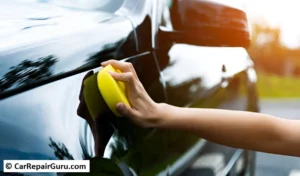
Summer sun can be relentless, causing damage to your car’s paint and interior materials over time. Taking proactive steps to shield your vehicle from UV rays not only preserves its appearance but also extends its lifespan.
Effects of Sun Exposure on Paint and Interior Materials
Prolonged sun exposure can fade your car’s paint, leading to a dull and weathered appearance. UV rays also degrade interior materials like the dashboard, seats, and trim, causing them to crack, warp, or lose color. Excessive heat can further damage electronics and weaken adhesives inside the car.
Recommendations for Protecting Your Car
- Wax Regularly: Apply a quality wax to your car’s exterior every few months. Wax acts as a protective barrier, shielding the paint from UV rays and preventing oxidation.
- Use Sunshades: Invest in reflective sunshades for your windshield and rear window to keep your car’s interior cool and protect it from direct sunlight.
- Park in the Shade: Whenever possible, park under trees, in garages, or shaded areas to minimize sun exposure.
Tips for Maintaining the Interior
- Clean and Condition the Dashboard: Use a UV-protective cleaner to prevent cracking and fading.
- Protect Seats: Install seat covers or use a leather conditioner to keep them supple and prevent drying out.
- Ventilate the Interior: Leave windows slightly cracked (if safe) to reduce heat buildup.
By caring for both the exterior and interior, you can keep your car looking great and functioning well, even during the hottest summer days.
Prepare an Emergency Kit for Summer Driving
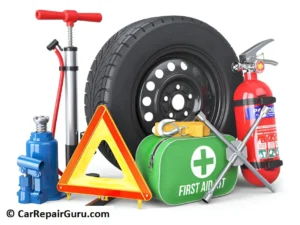
A summer car emergency kit is a must-have for any driver. The combination of high temperatures and unexpected situations, such as breakdowns, can turn a simple trip into a stressful experience. Being prepared ensures safety and comfort while you wait for assistance.
Essential Items to Include in a Summer Emergency Kit
- Water: Carry enough bottled water for all passengers to stay hydrated in case of delays.
- Non-Perishable Snacks: Keep energy bars or trail mix for sustenance.
- First Aid Kit: Include bandages, antiseptics, pain relievers, and sunscreen.
- Basic Tools: Pack jumper cables, a tire repair kit, and a multi-tool.
- Portable Phone Charger: Ensure you have a fully charged power bank.
- Flashlight and Extra Batteries: For visibility during nighttime breakdowns.
- Reflective Warning Triangles or Flares: To alert other drivers of your presence.
- Cooling Accessories: Include a portable fan, cooling towels, or an umbrella for shade.
- Blanket and Spare Clothes: For unexpected temperature drops or overnight waits.
Importance of Being Prepared for Summer Emergencies
Hot weather exacerbates the discomfort and risks of breakdowns. Dehydration, heatstroke, and prolonged exposure to the sun can become serious issues without the right supplies.
Tips for Regular Maintenance of the Emergency Kit
- Check and replace perishable items every three months.
- Ensure tools and electronics are functional.
- Restock water and batteries after each use.
A well-stocked emergency kit can provide peace of mind and critical support in unexpected situations, making it a summer driving essential.
Conclusion
Summer car care is essential for maintaining your vehicle’s performance, safety, and comfort during the hottest months of the year. By inspecting and maintaining critical systems such as the cooling system, tires, battery, and AC, as well as protecting the exterior and interior, you can prevent costly breakdowns and ensure a smooth driving experience. Don’t forget to prepare an emergency kit for added peace of mind. Implementing these simple yet effective tips will help you stay safe and enjoy your summer journeys to the fullest. Take care of your car, and it will take care of you!
Summer Car Care Tips (FAQs)
1. How often should I check my car’s fluid levels during summer?
It’s recommended to check your fluid levels, including engine oil, coolant, brake fluid, and windshield washer fluid, at least once a month. In extreme heat or if you’re planning a long trip, check them more frequently to ensure optimal performance.
2. What is the ideal tire pressure for summer driving?
The ideal tire pressure is specified in your car’s owner’s manual or on the driver’s side door frame. Check tire pressure when the tires are cold, and adjust as needed. Remember, overinflated or underinflated tires can lead to uneven wear and reduced safety.
3. How can I tell if my battery is at risk of failing?
Signs of a weak battery include slow engine starts, dim headlights, and a swollen or cracked battery case. Use a multimeter to check the charge, and clean the terminals regularly to ensure a strong connection.
4. How do I protect my car’s paint from sun damage?
Wax your car regularly to create a protective layer against UV rays. Park in shaded areas, use a car cover, and wash your car frequently to remove dust and debris that can scratch the paint.
5. What should I include in a summer emergency kit?
Essential items include water, non-perishable snacks, a first aid kit, jumper cables, a flashlight, a portable phone charger, reflective warning triangles, and cooling accessories like towels or fans.
6. How do I know when to replace my wiper blades?
Replace wiper blades if they streak, skip, or make noise during use, or if you notice visible cracks or damage to the rubber. Regular checks, especially in hot weather, ensure clear visibility during sudden summer storms.
7. Why is an air conditioning system check important for summer?
A functional AC system keeps the cabin comfortable and prevents fatigue while driving. Regularly test the cooling performance, replace the cabin air filter, and have the refrigerant checked by a professional to maintain optimal efficiency.
